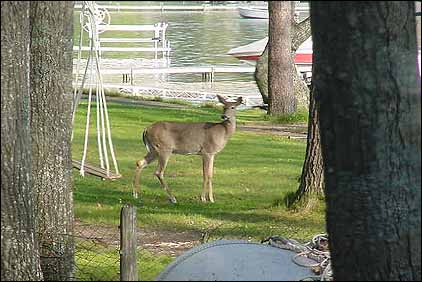Deer are probably the most widely distributed and best-recognized large mammals in North America. The white-tailed deer (Odocoileus virginianus) is found throughout much of North America. The mule deer (O. hemionus)is primarily a western species restricted to buttes, draws, and stream bottoms with sufficient forage. The black-tailed deer (O.h. columbianus) is a subspecies of the mule deer. Both white-tailed and mule deer are very important game animals.
In 1974 about 2 million white-tailed deer were harvested by over 8 million hunters. The trend in both harvest and hunter numbers has been generally upward since then. The positive economic value of deer through license fees, meat, and hunter expenditures for equipment, food, and transportation can be measured in hundreds of millions of dollars. Hesselton and Hesselton (1982) estimated the value of each deer harvested in the United States to be $1,250.
With the additional aesthetic value of deer to landowners and vacationers, importance of deer as a wildlife resource cannot be disputed. Despite their economic and aesthetic values, deer also have a variety of negative economic impacts they damage crops and personal property, and harbor diseases common to humans and livestock.
Unlike moles, rats, and other species implicated in damage, deer cannot be casually eliminated when in conflict with humans. But neither can landowners be expected to bear the entire burden of support for this valuable public resource.These factors often make deer damage control a difficult social and political problem as well as a biological and logistical one.
Control methods are built around effective deer herd management. Thus the various state wildlife agencies are often indirectly or directly involved through subsidy of control techniques, direct damage compensation payments, or technical advice.Scare devices, repellents, and shooting all have a place in deer damage control.
Effective control for fields, orchards, and other large areas, however, usually depends on excluding the deer with one of several types of fences, discussed later in this chapter. Toxicants, fumigants, and in most cases, trapping, are not used in deer control. Deer populations are rising while the number of hunters in the United States is falling.
The volume of literature on deer ecology and management exceeds that for any other wildlife species. The best single reference is Halls (1984). The following review is meant as a brief summary using the white-tailed deer as an example. The mule deer is very similar in all respects.
